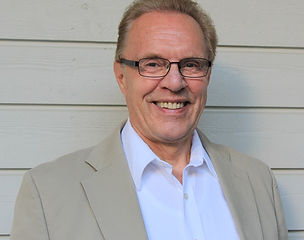What the coming Secretary-General of WMO thinks about the climate change
- Antero Ollila

- Sep 24, 2015
- 4 min read
Petteri Taalas was appointed the new Secretary-General of the World Meteorological Organization (WMO) on 4th of June 2015 for the term 1.1.2016 - 31.12.2019, Fig.1. Professor Petteri Taalas has acted as Director General of the Finnish Meteorological Institute from 2002.
There is a close link between IPCC and WMO. The Intergovernmental Panel on Climate Change (IPCC) was established by the United Nations Environment Programme (UNEP) and WMO in 1988 to provide scientific view on the current state of knowledge in climate change and its potential environmental and socio-economic impacts. The IPCC is administered in accordance to UNEP, WMO and UN rules and procedures, including codes of conduct and ethical principles.

Fig.1. Petteri Taalas, the coming Secretary-General of WMO.
Taalas has been the leading person in the climate change discussion in Finland. He does not hide his opinions about reasons and implications of the climate change. The greatest Finnish newspaper Helsingin Sanomat published just recently on 20th of September some insights of Petteri Taalas about the climate change. He says that (translation and the bold fonts made by me) “the extreme weather occasions – like floods, droughts, forest fires, storms – have increased. Draught, floods and heat waves have already killed tens of thousands of people even in Europe. There are even one billion potential climate refugees in the world. The climate change is already now one reason for the African refugee situation. It was also one of the background factors in the so called Arab spring, as the food price went up because of drought.”
The writer would like to remain that in fact there are no statistical evidences about the increased numbers of extreme weather occasions. The opposite is true in some cases like in tropical storms and hurricanes. The food production has increased quicker than the world’s population even in warm countries like Brazil. That is why there cannot be any evidence that the victims of floods would be caused by the actions of mankind.
IPCC published a press release 27th of September 2013 in Stockholm for informing the essential results of the 5th Assessment Report AR5. In this press release IPCC says that “global surface temperature for the end of the 21st century is projected to exceed 1.5 C relative to 1850 to 1900 in all but the lowest scenario considered, and likely to exceed 2 C for the two high scenarios”.
In which way this message was formulated in the Finnish press release submitted by the Finnish Meteorological Institute in the very same day? They wrote the message in this form: “According to the severest scenario the global temperature may increase by the end of the century almost five degrees.” It is well-known that the Finnish organization follows tightly its leader and all the important reports and public presentations are approved by Petteri Taalas. The Finnish media wrote that the global temperature will increase 5 or 6 degrees by the end of the century and later on especially Helsingin Sanomat changed the formulation using the expression at least 4 degrees. The Finnish Meteorological Institute has not reacted on this manipulation - a silent approval.
So it is very obvious that Petteri Taalas is among the climate change alarmists, if he should be classified into the main groups. I do this classification, because in a public lecture about the climate change, Taalas called the climate change researchers as deniers, if they did not approve the official models of IPCC for the climate change.
The Finnish Meteorological Institute has a Climate Guide for the public on its web pages. I noticed that there are two interesting features in a graph representing Finland’s annual temperature development since 1848, Fig.2.

Fig.2. The Finnish annual average values (red line and dots) and the decadal average values according to the dynamic regression analysis (black lines). The dotted green lines are real average values of 30’s and 80’s.
Firstly the temperature of the year 1938 was higher than that of today. Secondly the black lines should be the average decadal values. Even by eye it is easy to find out that it cannot be true. I calculated the real average values for 30’s and 80’s, and they are marked by the green dotted lines in Fig.2. The real average value of 30’s is 2.2 C and according to the graph it is only 1.6 C, which is 0.6 degrees lower. From the reference I could find out that in the original study the researchers have applied dynamic regression analysis by using dynamic linear model (DLM) in analyzing the temperatures, and the decadal values originate from this DLM analysis.
The skeptical or realistic climate change researchers could remind that both IPCC’s simple model - and also the average value of computer based GMCs - gives a temperature forecast for the year 2013, which is 1.15 degrees. This value is 35 % higher than the observed value 0.85 degrees. The mankind has increased the carbon dioxide emissions 263 GtC since 1998, which is about 35 % about the total emissions since 1750. Despite of this, there has been no temperature increase sincew 1998. Maybe that is the reason, why I have not found in AR5, what is the exact temperature forecast of the IPCC’s model. In the Science Basis there are more than 1500 pages but this simple figure cannot be found. Mainstream media seems to be happy with the bold forecasts (projections) and they do not bother to ask these simple questions: How accurate is IPCC’s model or what is the model value for 2013.




























Comments